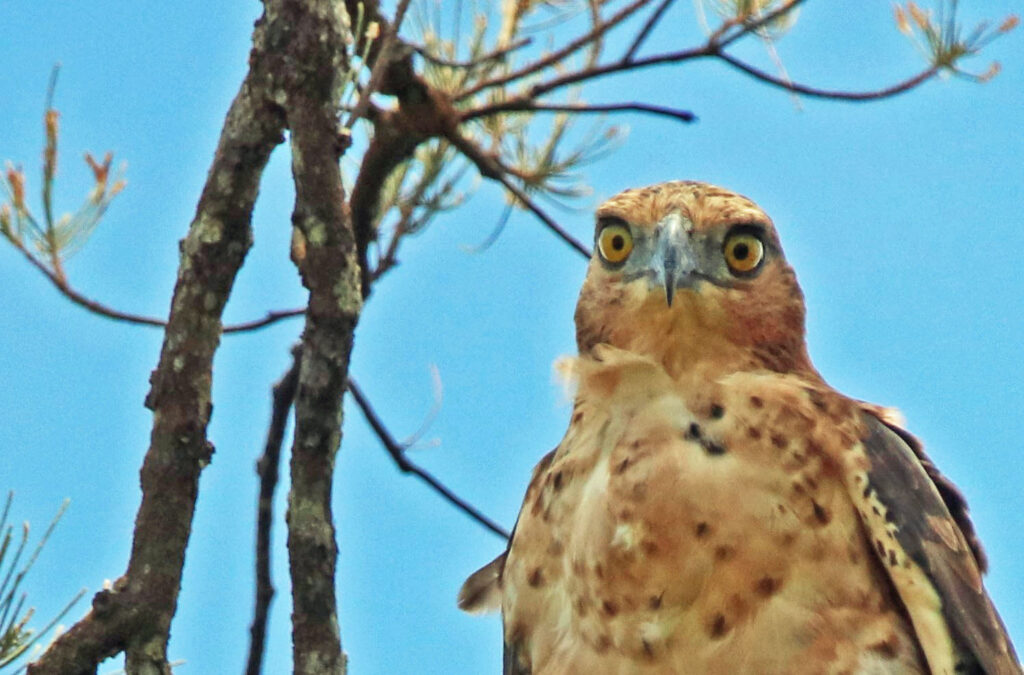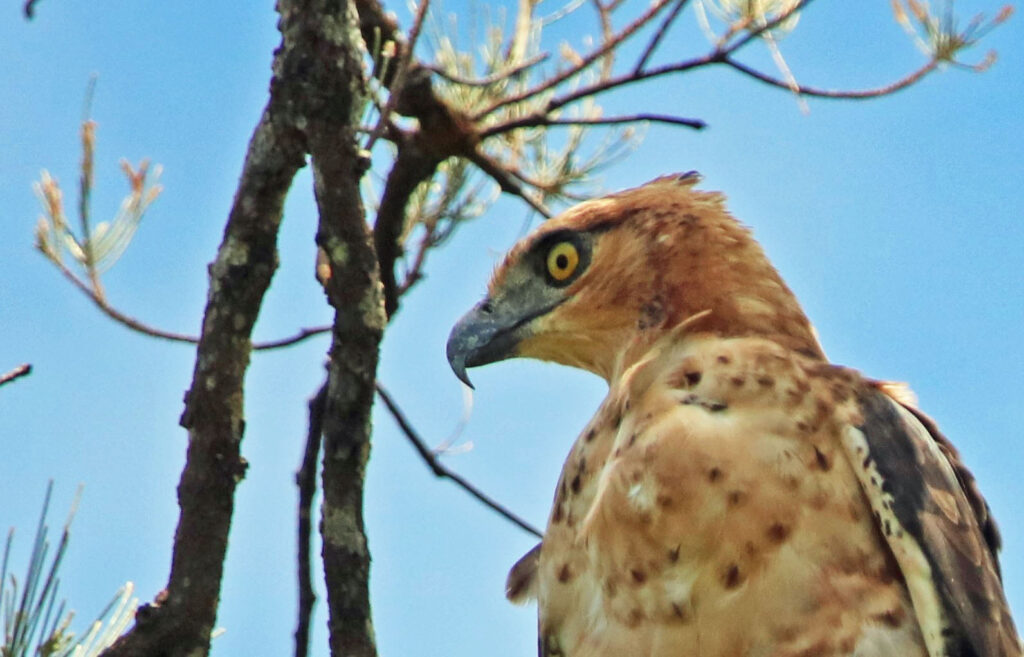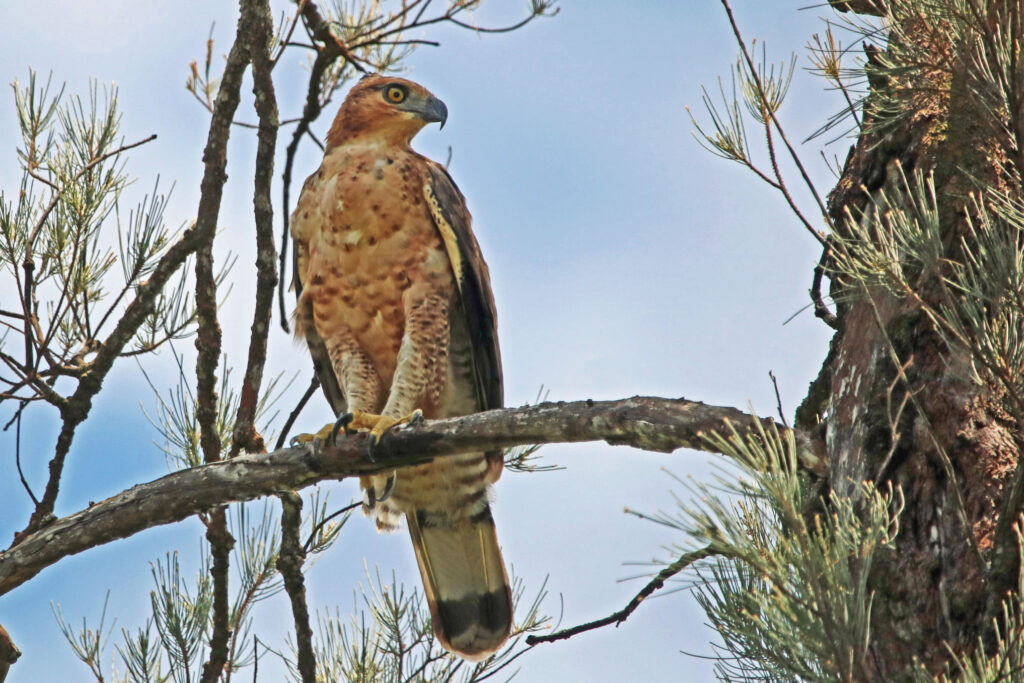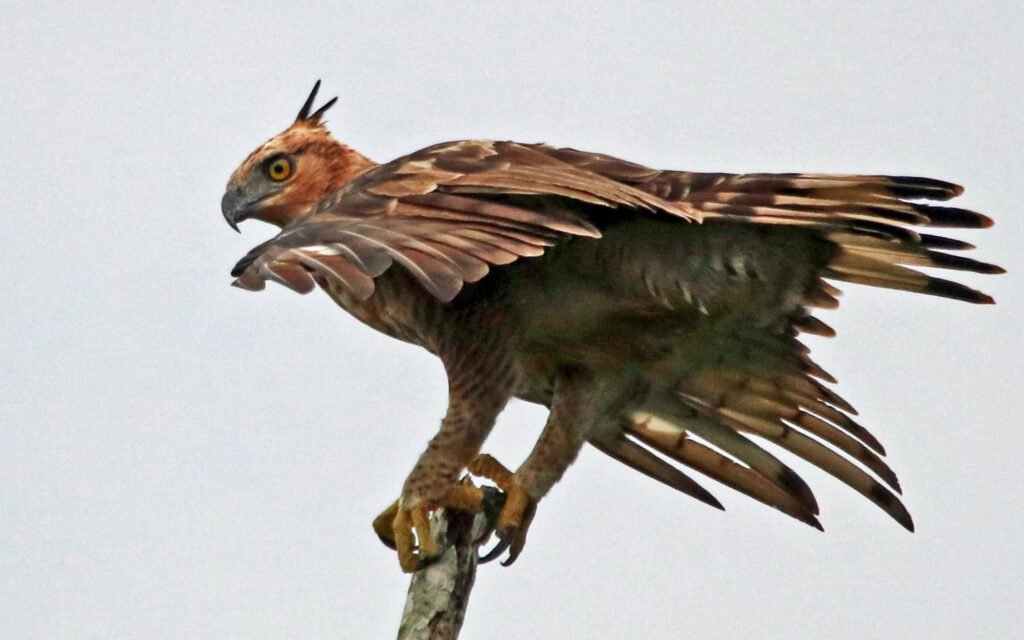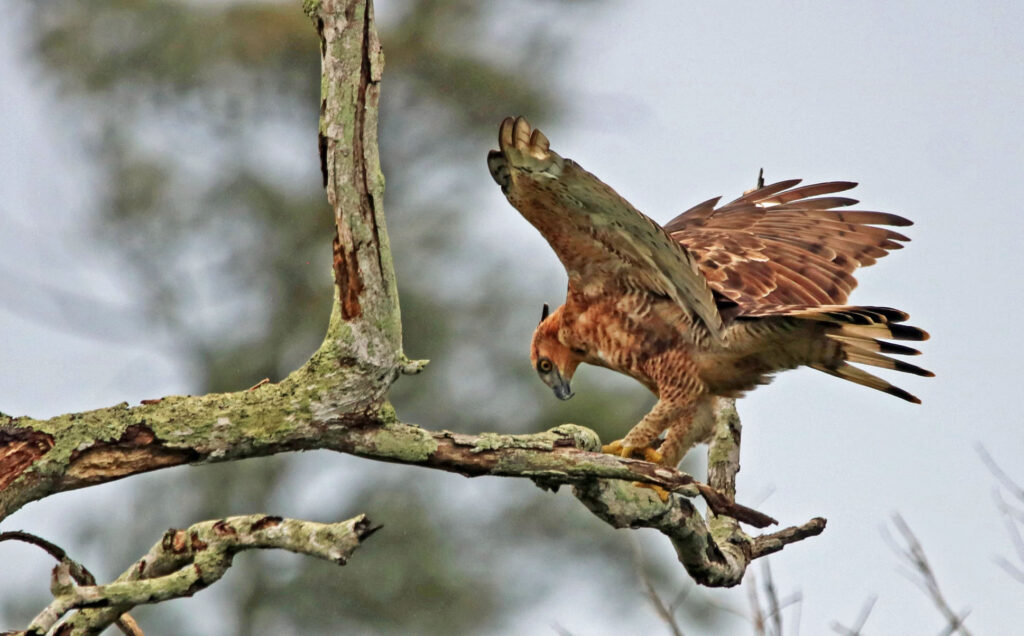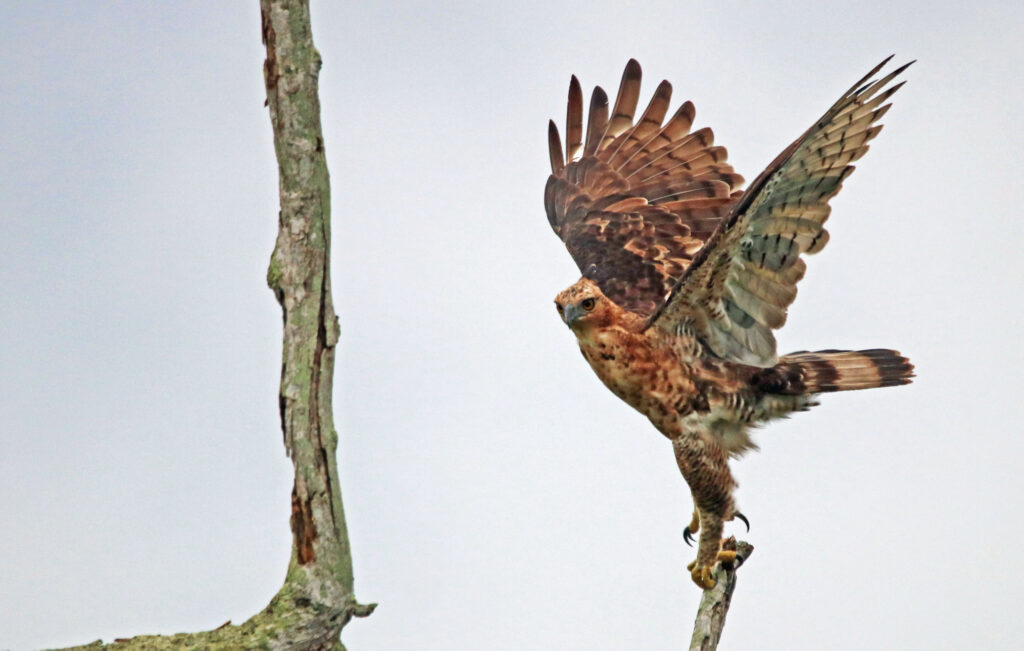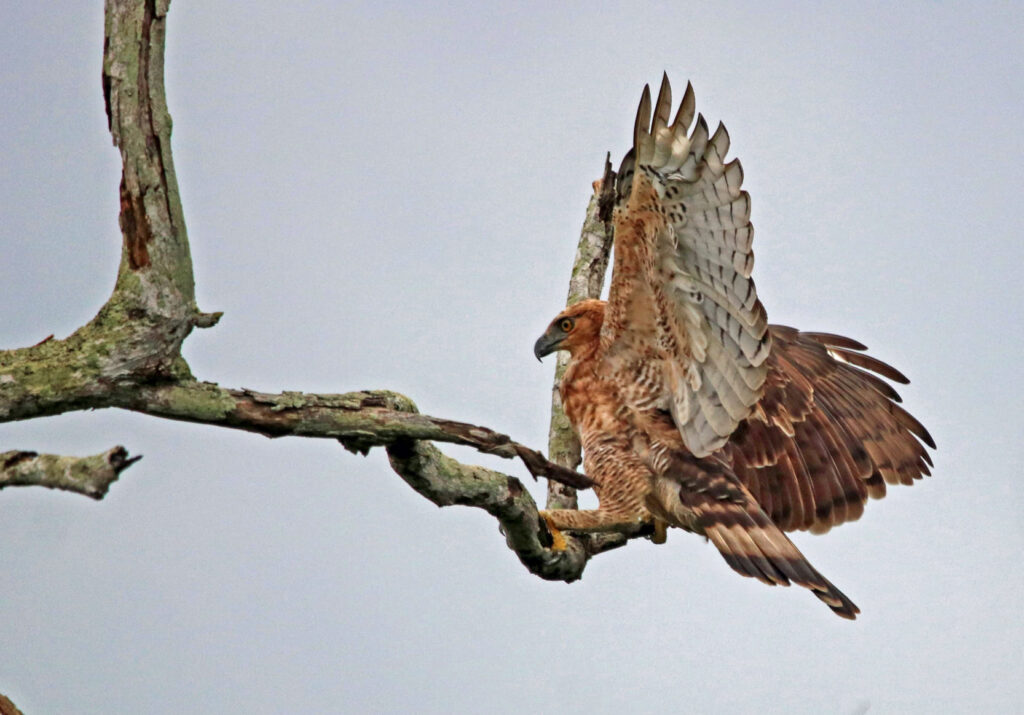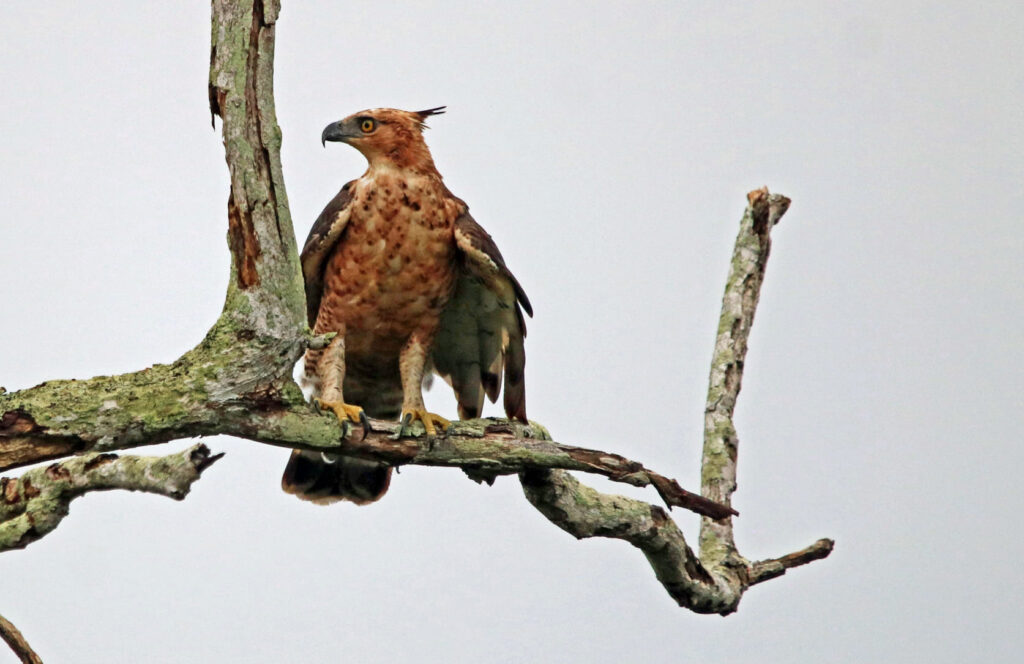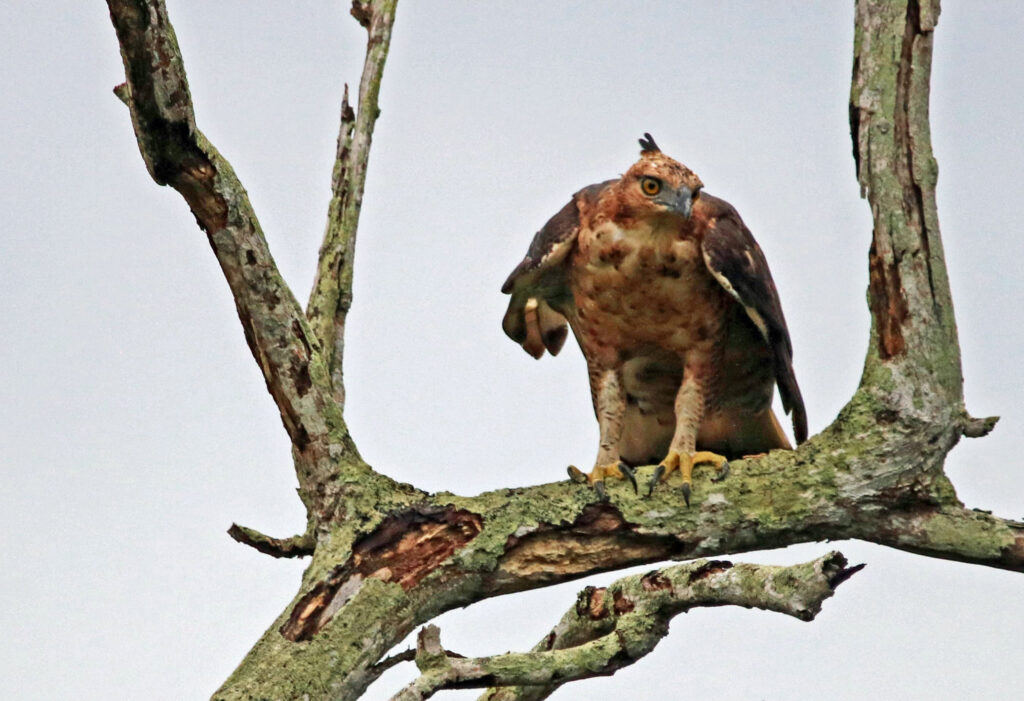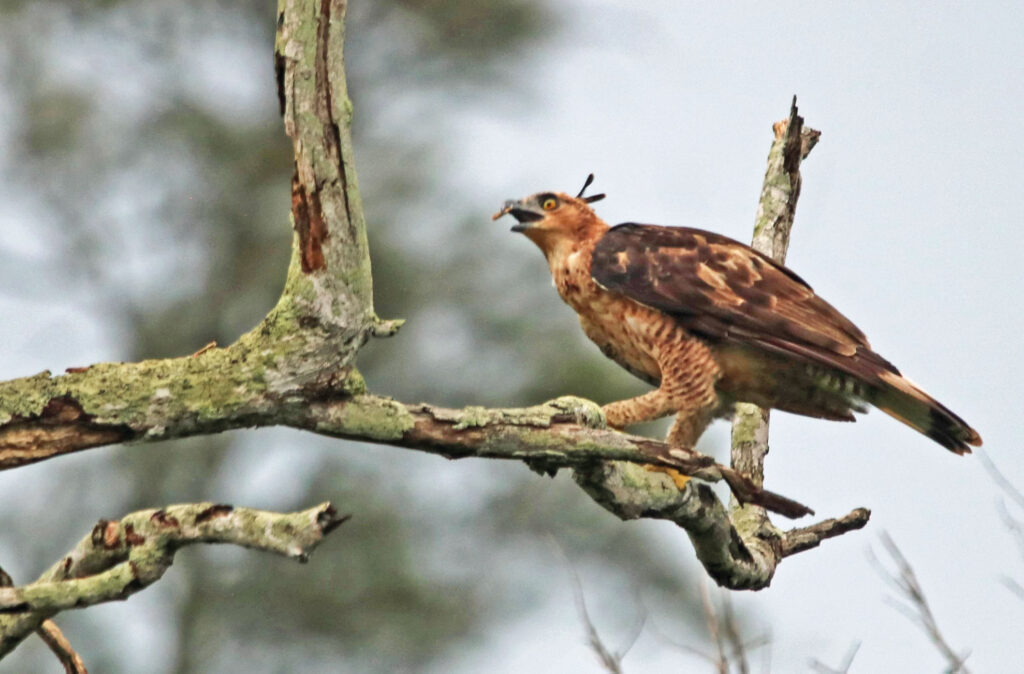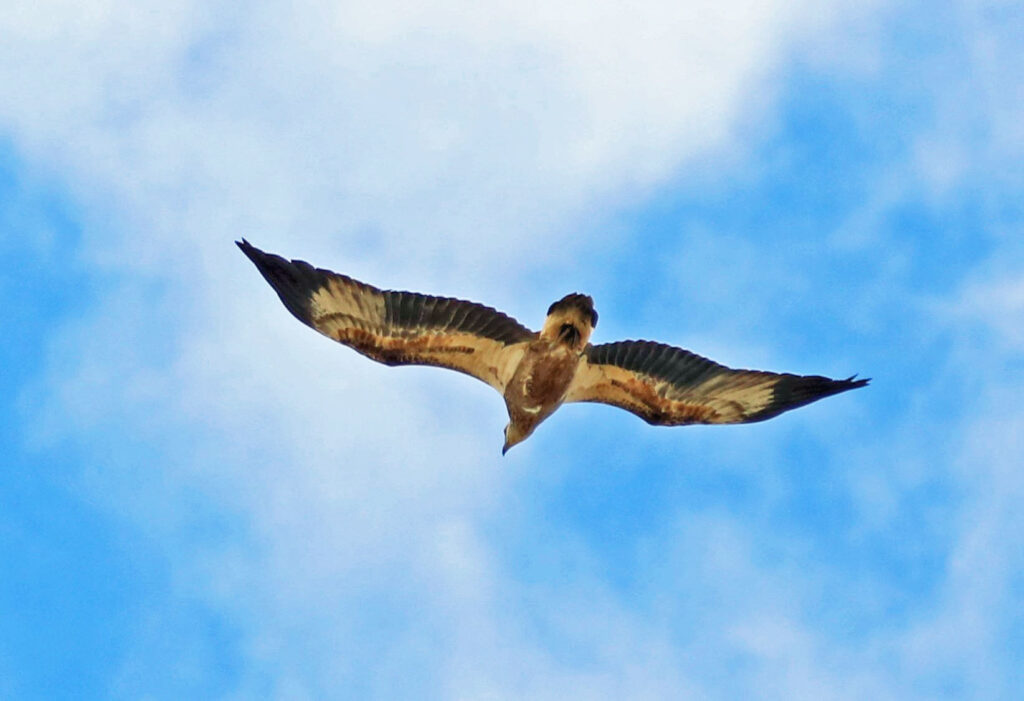I have been photographing birds for quite a long time but it was only on October 1 this year that I managed to come across a Wallace’s hawk-eagle for the first time in Piasau Boat Club area. Since then, I managed to encounter it again on October 11. It gave me great joy to be able to photograph the beautiful eagle on both occasions. I look forward to more encounters with the eagle in the days to come.
The Wallace’s Hawk-Eagle is a species of bird of prey in the Accipitridae family. It is found in South East Asian countries like Brunei, Indonesia, Malaysia, Myanmar, and Thailand, occupying moist lowland evergreen and semi-evergreen forest. It is threatened by habitat loss. It is among the smallest eagles in the world at about 45-59 cm long with a wingspan of 95-105 cm and weighing 500-610 g (about the size of a Peregrine Falcon).
These eagles are black-brown from above and have a rufous-buff head with a black, buff-tipped crest and yellow eyes and feet. They feed on birds, bats, frogs, skinks, and lizards and hunt from a perch.
The breeding season is probably from November-February, since one recorded nest had a large chick in it during February. Pairs remain within their breeding territories year round.
nest of a Wallace’s Hawk Eagle is placed in the tree canopy and built out of sticks. It is lined with twigs, which are added continually until the young fledges. Clutch size is most likely one since more than one chick in a nest has never been recorded. Incubation and nesting periods are unknown.
Wallace’s Hawk Eagles are threatened by habitat loss and could be close to extinction in Thailand due to clearing of all lowland forest. Their global numbers have declined due to habitat destruction for logging and rubber and oil-palm plantations. They are currently listed as Vulnerable by BirdLife International and are under legal protection in Myanmar, Thailand, Indonesia, and Malaysia.
Wallace’s Hawk Eagles are named after Alfred Russel Wallace, a British naturalist, explorer, geographer, anthropologist and biologist.
 CY@CY Says Welcome to my dreamscape. Where a Lim is also a Ling.
CY@CY Says Welcome to my dreamscape. Where a Lim is also a Ling.
